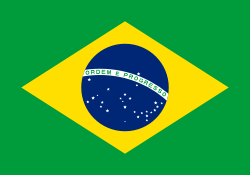Unprecedented Forest Fire Devastates Tropical Rainforests, Sets CO2 Emission Record
 Brazil
BrazilA new report reveals that Brazil experienced a catastrophic year in 2024, with over 30 million hectares of wilderness burned—an area larger than Italy. This figure represents a staggering 79% increase compared to 2023, following the country's worst drought since record-keeping began in 1950. The report, released by Fire Monitor, a collaborative initiative monitoring Brazil’s biomes, underscores the extent of the devastation.
The Amazon rainforest was particularly hard hit, accounting for 58% of the total burned area, with the state of Pará experiencing the most severe impact. This alarming data poses a significant challenge for Brazil as it prepares to host COP30 in Belém later this year, drawing international scrutiny.
Experts are concerned that the rise in wildfires is not solely due to natural conditions, but also fueled by human activities, particularly in the agricultural sector, which often relies on fire for land clearing. Ane Alencar, a coordinator at MapBiomas, noted that for the first time, forest areas suffered more than grasslands and pastures, stating, “Once a forest is hit by fire, it takes years and years to recover.”
With investigations into suspected arson on the rise and the prospect of continued drought, researchers warn that 2025 could witness similar wildfire conditions unless adequate rainfall replenishes the soil. While the Brazilian government under President Luiz Inácio Lula da Silva has made strides in reducing deforestation, the increasing incidence of wildfires continues to raise concerns about the overall health of Brazil’s ecosystems.
 Brazil
Brazil Brazil
Brazil Brazil
Brazil